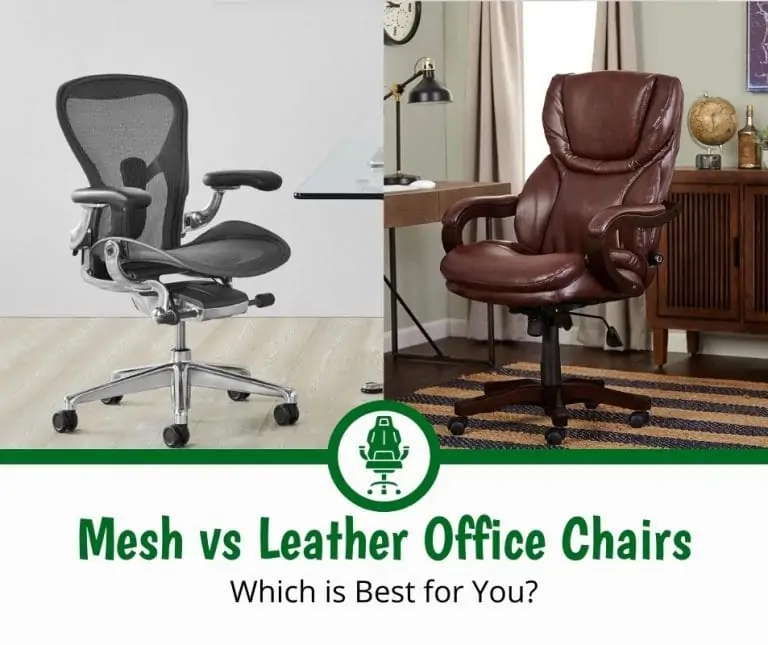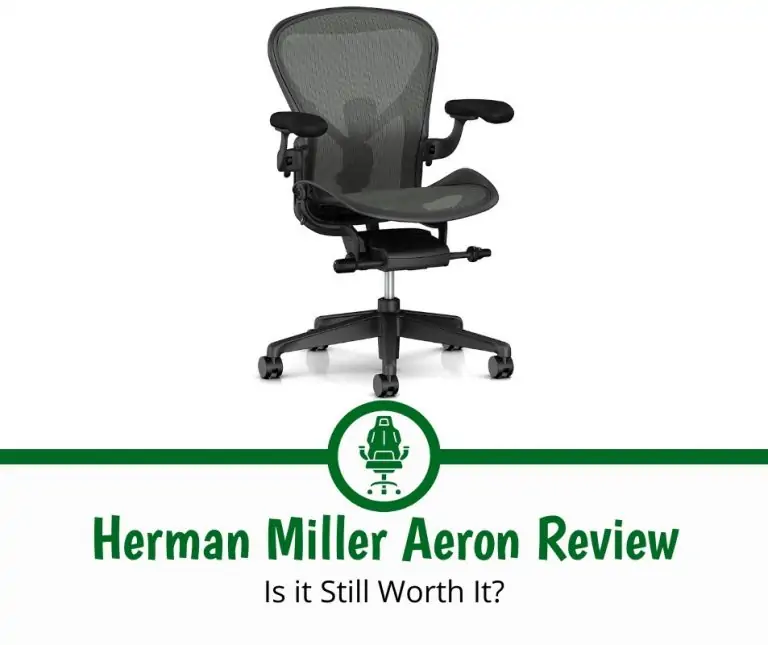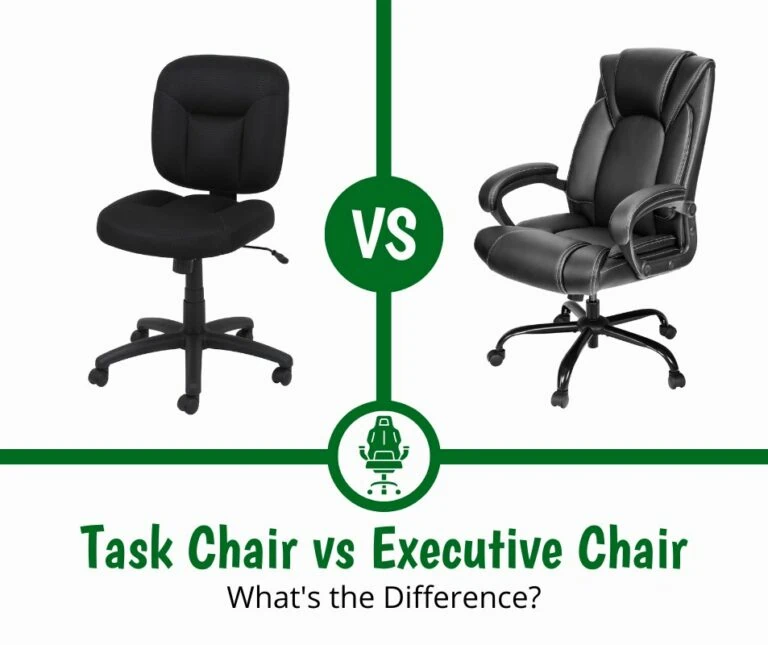How to Fix a Squeaky Office Chair: The Complete Guide

Are you experiencing squeaky noises as you sit or shift your body weight in your office chair? Squeaky office chairs can drive you crazy and negatively affect your productivity. The nuisance of the noise cranking back and forth can disrupt your focus, meaning it lowers your ability to be creative and get things done.
The squeakiness of your office chair is largely attributed to the loose, broken, dirty, or rusty components. Fortunately, you can easily address these issues by fixing or replacing the parts altogether. We’ll cover why your office chair is squeaky, how to identify the problem, and the best ways to fix them.
Reasons Why Office Chairs Squeak
There are many reasons why your chair squeaks. Over time, a tiny squeak can become loud grinding noises that disrupt your day. The most common reasons for squeaky office chairs are loose screws, rusty components, and worn-down joints. We’ll go into more detail about why they happen, so you can prevent them from happening in the future.
Loose Nuts and Bolts
It’s extremely common for office chairs to experience the loosening of nuts, bolts, and screws. Many of the chair’s components are held together by screws.
The back and leg equipment of the chair is secured to the seat pan by nuts and bolts. Other screws are used to secure the headrest and lumbar support to the back. And screws are used to have the armrests mounted to the seat pan.
Constant body pressure and weight shifting cause these bolts to loosen over time slowly. As a result, the nuts and bolt will experience a friction movement that starts to push the bolt loose. The squeaking noise occurs when two parts are rubbing against each other.
Another possibility is that you simply didn’t fasten all the screws during installation. Many affordable office chairs require users to fully assemble their chairs, which requires many parts to be screwed onto each other. You may have forgotten to check that all screws were fastened tightly during the installation process, which results in cranky noises.
Wear and Tear
Often, your office chairs can be cranky from the wear and tear of the components. If the parts are worn, the screws and bolts may not fasten as securely as they once did. Metal can dissolve and corrode over time, and wood can splinter. This increases the chances that friction or loose parts in your chair could cause squeaky noise.
For example, the swivel-base junction and cylinder mechanism junction can rub against each other due to wear and tear. If the components are worn, these weak joints will cause friction between wear the parts meet.
The chair can progressively break down from repetitive motions and an overload in tension. Sitting, reclining, and adjusting movements can wear down every component of the chair. This is especially true if you are exceeding or meeting the weight capacity of your chair.
As a result, this can lead to wood splinting, metal flexing or breaking, and or even the sean pan fracturing. If you notice any broken components, it’s important to replace them immediately. While you can tighten the screws or lubricate the metal components, there’s not much you can do when the parts are worn. The only option is to replace the specific components or the entire chair.
While you may want to fix a squeaky chair, broken or worn-down components in a chair can be hazardous, especially if something comes apart. It’s best to air on the side of caution and replace the chair altogether.
Rusty Parts
Your chair is made up of moving elements allowing them to elevate, lower, roll, lean back and provide a wide array of adjustments. However, over time the factory lubricant will have worn off. Generally, lubricant wears off due to repeated action or simply dries out. Additionally, the dust, filth, and grime that builds up can clog up the oil. The lack of lubrication can cause the plastic, rubber, or metal material to rub against each other.
Also, dirt particles, humidity, and oxidation of the metal mechanisms are prone to stiffness and rust. Again, this causes friction between multiple components, which leads to squeaky noises.
Moisture in the environment can cause the metal components to trust. It’s best to look for mid to high-end office chairs that use polished aluminum bases, which are less prone to rust. These manufacturers will coat the aluminum base with anti-corrosion solutions to prevent rust.
Steps to Fix a Squeaky Office Chair
Depending on the source of the grinding noise, there are many ways you can address and fix issues from your office chair. Of course, your solution will greatly depend on what is causing the noise.
Determine Where the Squeak is Coming From
Before you begin to fix the creaking noise, you’ll want to determine the source that it’s coming from. You can begin by sitting on a chair and carefully listening to where the noise comes from. The goal is to try to make movements that trigger the squeakiness.
For example, if you’re moving up and down, and the chair is creaking, there’s a good chance the source of the squeakiness is from the seat or the cylinder that holds up the seat. Additionally, you’ll want to check the armrests. Adjust the armrests from side to side and pivot them to see if there are any noises.
Also another common point of squeakiness is the point between the backrest and the seat. Often, a creaking noise will occur whenever you recline. This is especially true for gaming chairs that weren’t properly assembled.
Once you’ve determined the source of the noise, you can focus your efforts on the areas that are triggering the noise. Next, recline the seat to its maximum backrest angle and flip the chair over so you’re able to work on the bottom components of the chair, such as the gas lift mechanism, base, and wheel casters.
Tighten Bolts and Screws
After you’ve located the exact source of the noise, you can look for loose screws. Use a screwdriver to tighten them. If you have lost screws or bolts, it’s best to replace them. That way, all parts are as secure as can be.
When inspecting your chair, it’s important to see other areas that may have come loose. For example, springs and tensions that have been broken should be replaced. Any padding that sags or has lost its shape should be replaced as well.
Clean the Rust
Many chair owners forget to clean their chairs every few months routinely. Steel, metal, and aluminum components are prone to rust. They are locations in the seat tension, gas lift mechanisms, casters, tilt adjusters, and spring. When rust accumulates, the adjustable components will squeak.
You can use a toothbrush to scrape the rust and grime off. And wipe down the chair with a clean microfiber cloth. Hard-to-reach rust can be removed with a WD40 spray.
Lubricate Metal Components
All metal components should be lubricated with oil, grease, or some form of lubricant. The level of viscosity in these solutions will resist the damage and eliminate the friction between components.
In most office chairs, the friction point tends to be around bolts, springs, and screws. Before you apply any lubricant, make sure to tighten all parts securely.
Applying lubricants will prevent friction by loosening the joints, which contributes to the noise. It’s important to lubricate your metal parts routinely to prevent the risk of rust. That’s because
the oil prevents moisture from interacting on the surface of the metal.
Replace the Rusted or Broken Parts
Many reputable manufacturers will sell furniture replacement parts. For example, Herman Miller and Steelcase sell wheel casters, lumbar supports, and arm pads. If you don’t see a specific part on their website, you should contact the seller directly and request spare parts.
Worst case scenario, Amazon and the online marketplace will sell spare parts. You can find gas cylinders and even entire chair bases.
Fix the Springs
Underneath your seat pan is seat-tension springs that will support your weight and offer a cushion for your seat. If the squeaky noise occurs immediately when you sit down, the seat springs may have been worn.
First, locate unscrew and remove the chair’s turn-knob and spray oil or lubricant on the housing. If lubricating it isn’t enough, you may want to attach Teflon thread seal tape between the two springs. This reduces the pressure and friction from the springs, which can cause squeaky noise.
Apply Glue or Anti-Static Spray
Consider using wood glue to hold broken parts if you own a wooden office chair. Keep in mind that this should only be done as a temporary solution. For example, if the wooden arms are splintered, it can be dangerous. The sharp edges can injure or cut your arm. Wood glue is a powerful adhesive that allows you to hold wooden components together.
Another point of friction can be caused by carpet fibers or even animal fur. These small fibers or hairs can get into the creases of the chair, which clogs the chair from smoothly functioning. Applying an anti-static spray to these parts will also eliminate the dust particles and prevent rust. Essentially, the spray is used to eliminate loose fabrics, hairs, or fibers clinging onto the chair that is causing friction.
Replace Your Office Chair
Sometimes, your office chair has run its course. If you have exhausted all these methods to fix your squeaky chair, it’s time to get a new office chair. Worn-out fabrics put extra strain on the components, which leads to loose and rusted components.
Additionally, continuous pressure over long periods will wear down the base, frame, and especially the plastic components of the chair. Some cheap office chairs only have a short lifespan of a few years, while high-quality chairs can last over a decade.
Squeaky chairs are not only annoying but can also be dangerous to sit on. For example, if the cushion has worn down and the gas lift is damaged, it may not provide ample support for your body.
If you notice the parts don’t work like they used to and you can’t fix the squeaky noise, it’s time to replace it with a brand new high-quality office chair.
Frequently Asked Questions
Here are commonly asked questions about squeaky office chairs.
What Should I Spray on My Squeaky Office Chair?
One way to stop the squeaky noise is to spray WD40 lubricant. The WD40 is a multipurpose solution that aims to prevent rust and remove corrosion. They can act as a lubricant to help reduce friction and allow your chair to operate smoothly. It even contains a thin straw to get into the nooks and crannies of your chair’s mechanisms. It’s also an inexpensive solution that is easy to clean up after application.
What are the Best Lubricants to Use?
It’s imperative to be aware of the type of lubricant you use since some lubricants can damage or discolor your beautiful office chair.
Silicone-based lubricants are a great solution for chairs made from plastic, rubber, and material parts. WD-40 is a silicone-based lubricant and is an excellent multipurpose solution available in spray cans.
Penetrating oil is a type of heavy-duty oil designed to eliminate dirt, grime, and rust from your office chair’s components. They are best used for metal and shouldn’t be used on other materials such as wood, vinyl, plastic, or rubber.
Beeswax is a great lubricant for office chairs with wooden components. Typically, executive office chairs contain wood bases or wood arms to provide a luxurious accent to the chair. These lubricants are made from natural ingredients that don’t stain or damage the wooden parts. Additionally, they work well in cleaning waterproof leather materials.
Is It Normal for My Office Chair to Squeak?
Squeaky office chairs aren’t normal and often is a sign of structural problems with the chair. Often, the issue can be resolved by tightening the bolts and spraying lubricant on the metal components. However, other times, it could be the seat cushion or frame has worn down and needs replacing. It may even mean that the frame can’t support the weight of the individual sitting on the chair.
Conclusion
Squeaking chairs can be frustrating, which can impact your productivity. Fortunately, fixing the noise doesn’t have to be difficult.
You can easily address the issue by understanding the root causes of your squeaky chair. Sometimes it’s a matter of tightening the screws, while other times, it highlights a more serious symptom that your chair is beginning to wear down.
Either way, you’ve now learned how to fix squeaky office chairs. With a little effort, you can enjoy comfortable seating without distracting noises. We hope you’ve found our guide helpful in fixing and preventing squeaky chairs.






